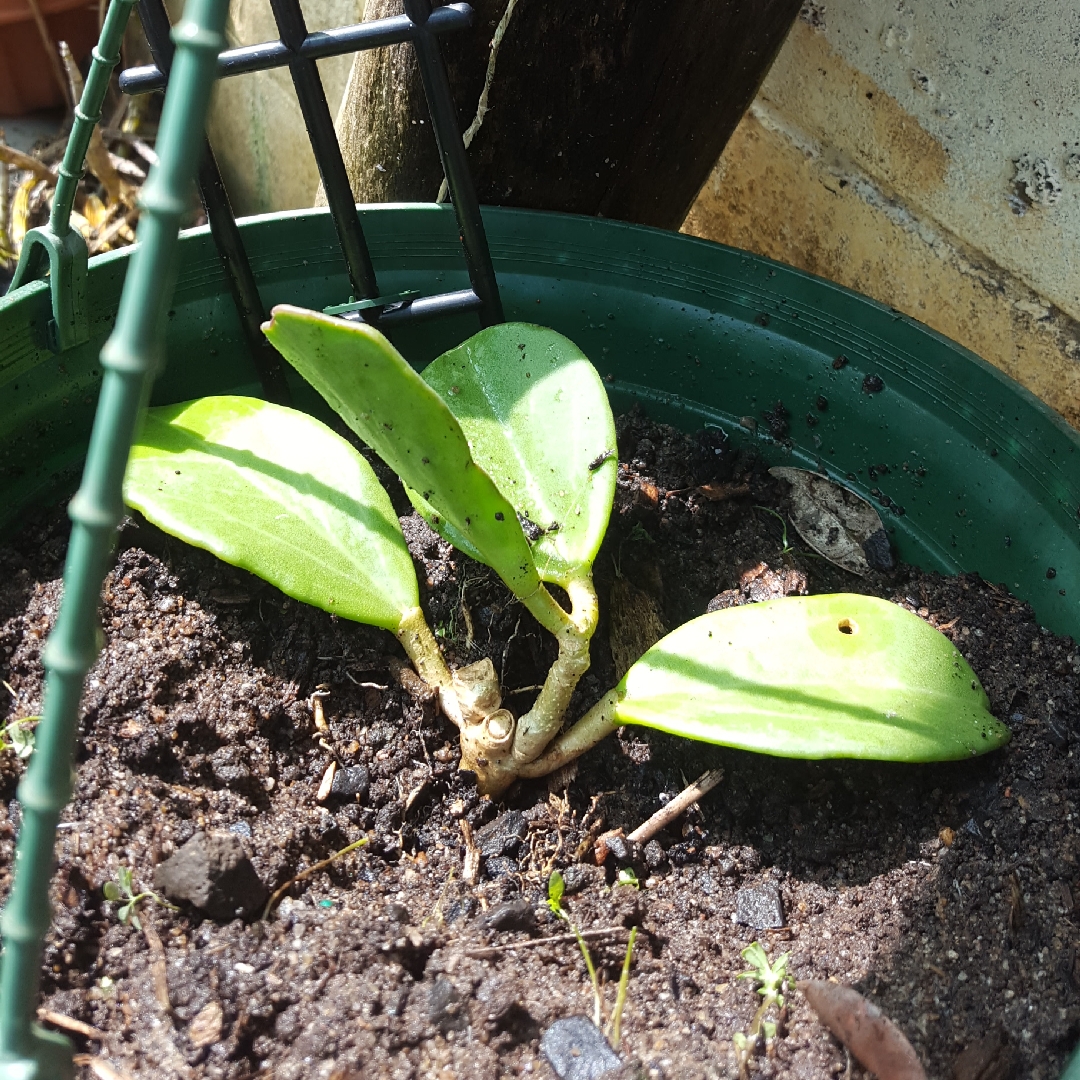
Hoya pachyclada
Hoya pachyclada
Hoya pachyclada does not vine and is slower growing than almost all other Hoyas. The succulent-like leaves have red edges. It produces white, glossy flowers. The plant usually forms a ball shape of flowers with 20-25 flowers in each cluster. It is suitable for the conservatory. In temperate climates they need to be grown in a warm bright room in the house or heated conservatory. They do best in good light.
Contributed by @abbyfromthebeach
-
Partial shade
-
Very little water
-
Not Frost hardy
-
Free draining
Common name
Hoya pachyclada
Latin name
Hoya pachyclada
type
Flowering climber
family
Apocynaceae
ph
6.1 - 7.5 Acid - Neutral
Plant & bloom calendar
-
Best time to plant
-
When the plant will bloom
full grown dimensions
 0.50 M
1.00 M
0.50 M
1.00 M
Hoya pachyclada
Hoya pachyclada does not vine and is slower growing than almost all other Hoyas. The succulent-like leaves have red edges. It produces white, glossy flowers. The plant usually forms a ball shape of flowers with 20-25 flowers in each cluster. It is suitable for the conservatory. In temperate climates they need to be grown in a warm bright room in the house or heated conservatory. They do best in good light.
Propagation
From Early Summer TO Late Summer
Remove a leaf with part of the stalk on it and put into a pot filled with a suitable compost or soil and keep moist. Place in a light place, not in direct sunlight and allow to root.
Flowering
From Late Spring TO Late Summer
Highly scented clusters of star shaped pale pink to dark pink flowers that appear wax like.
Planting Season
From Early Spring TO Late Winter
Re pot cuttings when they have rooted. Place in a sunny, light position, but shade from direct bright sun to avoid foliage scorch. In winter a minimum night temperature of not less than 10°C (50°F). Sharply draining, well aerated compost is essential for hoya to thrive. This can be made using one part by volume orchid bark, one part peat free compost and one part coarse perlite. Alternatively, use cactus compost but add some extra perlite.











